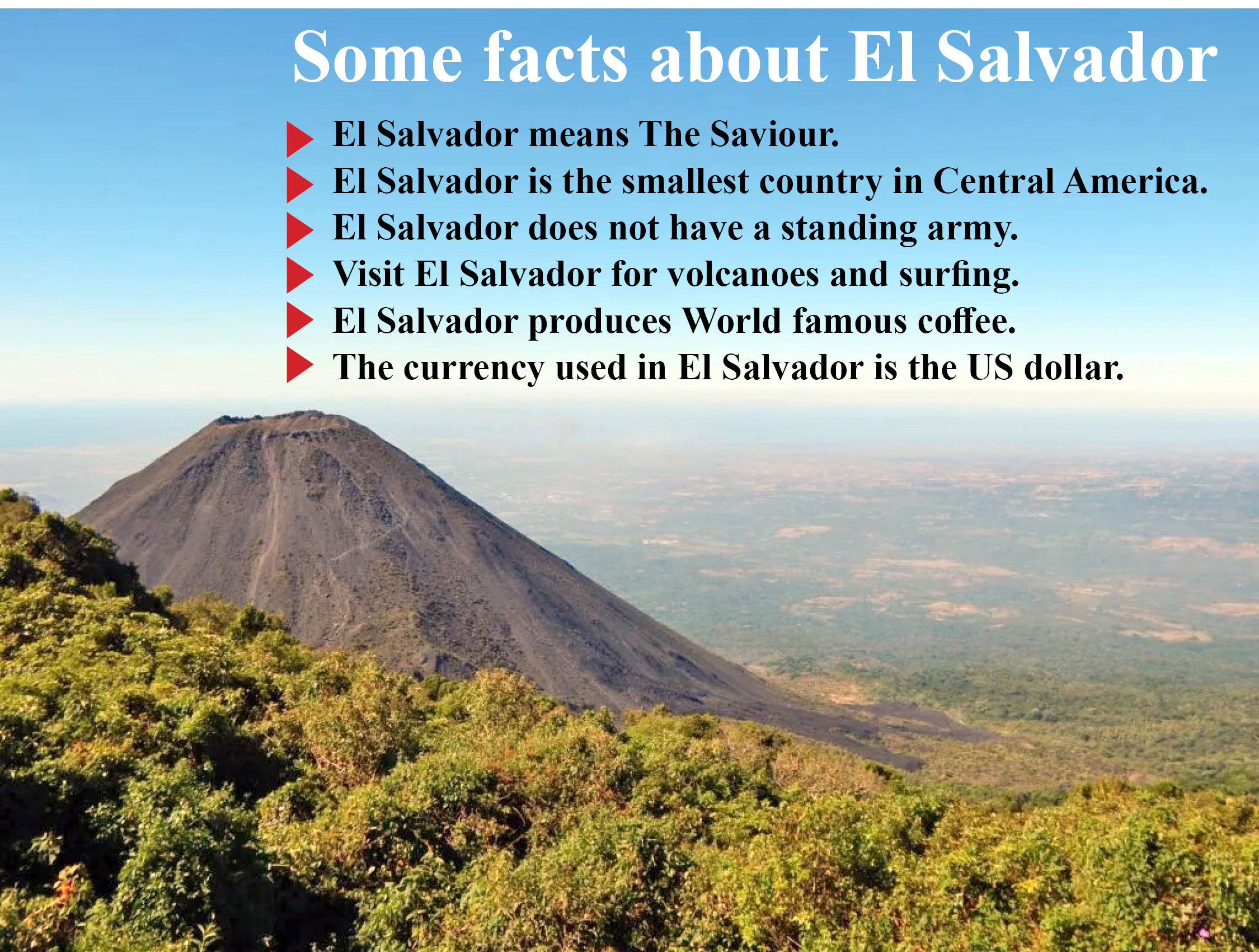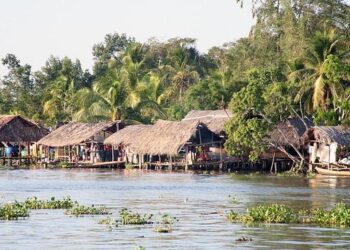1. El Salvador is the first country in the world to legalize Bitcoin. Please say something about it.
Guillermo Rubio Funes: El Salvador made history by becoming the first country to legalize virtual currency on the 5th June 2021, which aims to promote financial inclusion for the Salvadoran population, attract foreign direct investment and simplify remittances. With this move, bitcoin became the country’s official currency alongside the US dollar, opening the way for new opportunities and challenges in the global financial landscape.
![]()
Â
2. How many visitors of El Salvador receive and from which countries do they come?
Guillermo Rubio Funes: During 2023, El Salvador received more than 3.4 million foreign visitors, an increase of 33 per cent compared to 2022, with a benefit to the Salvadoran economy of more than US$3.79 billion. Most visitors are from the United States, Guatemala and Honduras.Â
Â
3. We have heard of the pyramids of Egypt, Sudan, Mexico and Guatemala, but never of the pyramids of El Salvador.
Guillermo Rubio Funes: El Salvador has several parks and archaeological sites near the capital city, and others in different parts of the country. Entrance fees are affordable for both nationals and foreigners.
One such site is the Cihuatán Archaeological Park, located north of San Salvador. Occupation of the site is estimated between 900 and 1200 A.D., during the Early Postclassic period. It has two ballgames courts, several ceremonial constructions and a building believed to have served as a palace. It has a plaza that would have been the site of markets and festivals.
Also, there is the Tazumal Archaeological Park, located in Chalchuapa, department of Santa Ana, which was formally registered in 1940, by the North American archaeologist Stanley Boggs, who identified a total of 13 structures, from small platforms to the most prominent mound or pyramid of 24 meters in height. Subsequent studies indicate that the Tazumal area covered a minimum of 20 hectares.
This complex has a series of buildings, mostly made of stone and earth, a ball court, among other ceremonial and residential structures that were located around it. It is the most visited archaeological park in the country. Likewise, El Salvador, which is the gateway to the Mayan World, holds one of the most significant heritages of humanity: Joya de Cerén.Â

This archaeological site, declared a World Heritage Site by UNESCO in 1993, is in San Juan Opico, department of La Libertad, and is known as the “Pompeii of America” for being a village of Mayan origin that was buried in 650 A.D., after the explosion of the Loma Caldera volcano. Joya de Cerén was discovered accidentally in 1976, when workers were terracing for the construction of seed storage tanks. There is an unsung hero, a worker who alerted the authorities.
The first investigations at the site began in 1978 by the American archaeologist Payson Sheets, who determined that the site is of pre-Hispanic origin. Between 1978 and 1996 intensive excavation sessions were carried out, after which 18 structures were identified, 10 of which were excavated and divided into four archaeological complexes. These structures include the temazcal, the shaman’s house, the communal house, storehouses and kitchens. Till date, and as a result of research at the site in recent years, new structures have been identified, making a total of 25. Also, vessels, footprints, a human burial, animal bones, cultivation furrows and remains of maize plants with different growth (mature cobs and corn) have been discovered. According to archaeological research, Joya de Cerén, at the time of the eruption, was an extremely prosperous settlement with an excess of food storage and other materials such as jade and cinnabar. It also had a sauna and a plaza, among other spaces.![]()
Â
4. If someone visits El Salvador, what are the 5 places you suggest visiting?Â
Guillermo Rubio Funes: El Salvador offers a varied experience for its tourists, between its mountains, cities and beaches. Suggested places to visit include:Historic Centre of San Salvador
The Historic Centre of San Salvador has emblematic places such as El Rosario Church, the National Palace and the National Theatre, buildings that captivate with the aura of the centre of the capital. You can also stroll along the busy Calle Arce, which has houses and buildings typical of 19th and 20th century architecture.
Los Volcanes National Park
Los Volcanes National Park is the protected natural area in El Salvador comprising three of the 14 “young” volcanoes (between 2 million and 250 years old, according to geologists) of the Apaneca-Ilamatepec mountain range: Santa Ana, Izalco and Cerro Verde volcanoes, in the departments of Santa Ana and Sonsonate. The Park is immersed within what is now known as the Apaneca-Ilamatepec Biosphere Reserve, declared with this denomination by UNESCO in 2007. The complex is in an area characterized by coffee production, which is an important economic activity for the local inhabitants. In addition, basic grains, flowers, honey, sugar cane, as well as livestock are produced.
Â
Suchitoto
Located 47 kilometers from San Salvador, in the department of Cuscatlán, it is a picturesque little town with post-independence architecture. It has cobblestone streets with restaurants, cafes and hotels. In addition, you can enjoy art, theatre and film festivals. It is home to a major attraction: Lake Suchitlán.Â
Â
La Libertad
Located in the central zone, its proximity to the capital and its accessibility are some of the reasons why many people come to La Libertad, as in less than an hour you will be tasting the delicacy of fresh seafood. This department offers beautiful beaches, among the most famous are El Tunco, El Majahual, San Blas, El Sunzal and San Diego.
The Flower Route
In the western part of the country there are mountains and important elevations above sea level, among them the Apaneca-Ilamatepec mountain range, with the highest peak reaching 2,381 meters above sea level. Six districts are in a good part of these elevations: Ahuachapán, Concepción de Ataco, Apaneca, Juayúa, Salcoatitán and Nahuizalco, which are connected by a road called “Ruta de Las Flores”.
The Flower Route is a charming journey over the Apaneca-Ilamatepec mountain range between the departments of Ahuachapán and Sonsonate, places with a pleasant cool climate, steeped in tradition and history, as well as a peculiar gastronomy and a variety of hostels and small hotels that will make your stay a colourful memory of your time in El Salvador.
Â
5. What are the business opportunities for Bangladeshi entrepreneurs in El Salvador?
Guillermo Rubio Funes: El Salvador and Bangladesh have traded textile and garment products with each other, so there are business opportunities in this area.
Â
6. Is there a writer, poet, artist or musician of international renown or fame in El Salvador?
Â
Guillermo Rubio Funes: Throughout time, writers, poets and artists have stood out nationally and internationally for their works and creations. Among them are:Â
Manlio Argueta
Poet, novelist, scriptwriter, teacher, director and committed intellectual, his writing is direct and simple. He is the author of the novels “A Day in Life” (1980); “The Valley of the Hammocks”; Little Red Riding Hood in the Red Zone (novel, 1977). His most widely distributed work worldwide is “A Day in Life”, a novel that has been published in numerous editions and translated into eleven languages. In 2005, it appeared in fifth place among the 100 best-known Spanish-language novels of the 20th century.
Roque Dalton
He is known worldwide as a prolific poet, with an educated and well-grounded pen; he also wrote narrative, drama and essays. Dalton was recognized as the most universal of Salvadoran poets because of his transgressive and avant-garde poetry. In homage to his birth, every 14th May we celebrate the National Poetry Day in our country, under legislative decree. He was assassinated in May 1975.
Â
Salarrué
Salvador Salazar Arrué, known as Salarrué, was a visual artist and writer. He stands out as one of the fundamental voices of Spanish-American literature for his concise and powerful recreation of Salvadoran reality, with works such as “Cuentos de Barro” and “Cuentos de Cipotes”. He was born in Sonzacate, department of Sonsonate, in 1899, and died in the capital city in 1975.
Â
Fernando Llort
He settled in the village of La Palma in the north of the country, where he founded a “Centro de Desarrollo Integral” where he taught art classes and worked as handicraft workshop. It was given the name “La semilla de Dios” (The Seed of God). He was the creator of a style called “palmeño” which is part of the Salvadoran identity.Â
Claudia Lars
She was born on 20th December 1899, in Armenia, Sonsonate, and died on 22nd July 1974, in San Salvador. Her real name was Carmen Brannon Vega. In 1934 she published her first work, ‘Estrellas en el pozo’ (Stars in the Well). She directed radio programs for children and a children’s page in a morning newspaper.
Â
7. If you would like to share something else…
Guillermo Rubio Funes: It is important to note that there are currently three indigenous populations in El Salvador: the Nahua, the Lenca and the Cacaopera. The Nahuat language is still spoken in some municipalities in the western part of the country. The indigenous peoples stand out for their dance expressions such as the dance of ¨Los Historiantes¨ and the ¨Torito Pinto¨, and for their handicrafts such as the black clay of Guatajiagua, the red clay of Santo Domingo de Guzmán, the basketry of Nahuizalco and the hammocks of Cacaopera.
Source link : http://www.bing.com/news/apiclick.aspx?ref=FexRss&aid=&tid=670943ae474f494fa819f96390da5cf0&url=https%3A%2F%2Fwww.dainikshiksha.com%2F%25E2%2580%2598el-salvador-receives-over-3-4-million-foreign-visitors-in-2023%25E2%2580%2599%2F285186%2F&c=18409384402079123444&mkt=en-us
Author :
Publish date : 2024-10-10 03:15:00
Copyright for syndicated content belongs to the linked Source.












